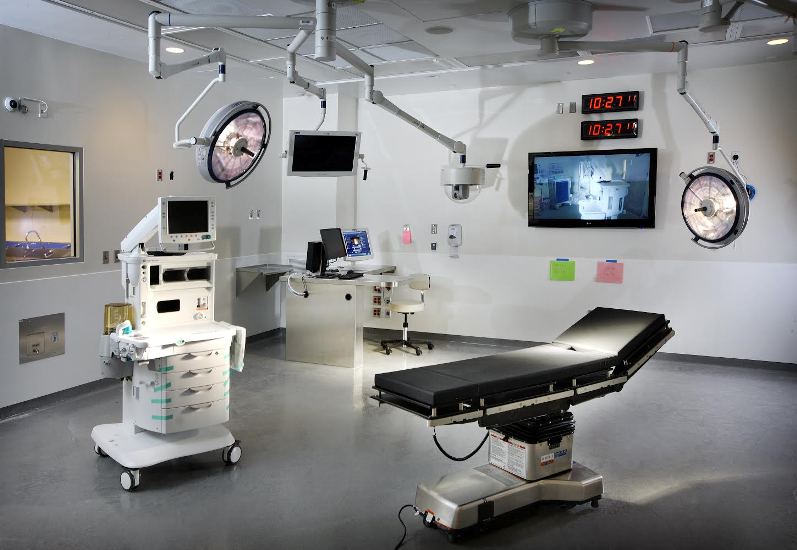 My wife Anne and I arrived at Johns Hopkins’s gleaming new Sheikh Zayed Tower at 5:15 AM on September 8. I knew I would soon be on an operating table with my breastbone split and my ribcage cranked open, exposing my heart and the aortic aneurysm that had brought me here. A heart-lung machine would be circulating blood throughout my body; I would be hooked up to a ventilator; a variety of tubes would be draining fluids from my chest and bladder; and an array of drips and syringes would be feeding fluids and drugs into my veins and arteries, keeping me hydrated and, I hoped, unconscious. Yet I felt strangely calm, curious to know how it would all turn out.
My wife Anne and I arrived at Johns Hopkins’s gleaming new Sheikh Zayed Tower at 5:15 AM on September 8. I knew I would soon be on an operating table with my breastbone split and my ribcage cranked open, exposing my heart and the aortic aneurysm that had brought me here. A heart-lung machine would be circulating blood throughout my body; I would be hooked up to a ventilator; a variety of tubes would be draining fluids from my chest and bladder; and an array of drips and syringes would be feeding fluids and drugs into my veins and arteries, keeping me hydrated and, I hoped, unconscious. Yet I felt strangely calm, curious to know how it would all turn out.
 I signed numerous consent forms, gave my name and birthdate to a succession of nurses and doctors, who checked the information with my wristband—best not to perform the surgery on the wrong patient. And I had a final conversation with Duke Cameron, who would be doing the intricate surgery to replace my aortic root with a Dacron graft. (He had also called the previous evening to make sure I was ready and had no further questions.)
I signed numerous consent forms, gave my name and birthdate to a succession of nurses and doctors, who checked the information with my wristband—best not to perform the surgery on the wrong patient. And I had a final conversation with Duke Cameron, who would be doing the intricate surgery to replace my aortic root with a Dacron graft. (He had also called the previous evening to make sure I was ready and had no further questions.)
He confirmed that he expected to do a valve-sparing procedure that would preserve my aortic valve, but if he encountered any unexpected difficulties—a calcified valve, for example—he would put in a valve made from cow tissue. He said he hoped I had had a good night’s sleep. I said I hoped he had slept well, too. That seemed more important.
They wheeled me into the high-tech operating room (photo above) around 6:45 AM.
I was back in the land of the conscious around 1:30 PM, awakening in the intensive care unit (ICU) to an assortment of monitors and a hive of activity. My breathing tube must have been removed soon after I regained consciousness (I have only a vague recollection), and I soon passed my first milestone, when I took a sip of water and swallowed it. A small fraction of patients have an impaired swallow response after heart surgery; my first sip indicated that my swallowing mechanism was working—including, importantly, the brain signals that govern it.
Dr. Cameron came in to tell me the surgery went very well. He performed the valve-sparing procedure, and had even corrected a slight leak in my valve. And that’s not all: He also closed a small hole in the wall between my atria—a condition I had had my whole life without knowing it.
It turns out that a tiny hole in the heart, technically called a patent foramen ovale (PFO), is surprisingly common; one in four or five adults has one. It occurs when a gap in the wall between the atria, through which blood circulates during fetal development, fails to close completely after birth. A small PFO usually causes no problems and is likely to go undetected, but it is associated with an increased risk of strokes and, possibly, migraine headaches. Finding and closing mine was clearly a bonus.
The morning after surgery, I took a few steps and sat in a chair. Later that morning, I was discharged from the ICU, and began the process of recovery under the care of a first-class staff of physicians and nurses in the state-of-the-art Zayed Tower (named for the first ruler of the United Arab Emirates and built with the help of a hefty donation from his son). I experienced little pain, gradually stepped up my walking around the unit, and one by one lost the drain tubes and intravenous piercings that had adorned my body. Then, three and a half days after surgery, I went into atrial fibrillation.
A-fib, as it’s universally known on the cardiovascular unit, is one of the most common side effects of open-heart heart surgery, affecting 30% to 40% of patients. Characterized by a rapid pulse rate (mine shot up to about 140) and irregular beating of the atria, it is not well understood: The trauma inflicted on the heart triggers A-fib, but it’s not clear how. The main concern with uncontrolled A-fib that it can lead to the formation of blood clots and stroke.
The first line of treatment is a drug to slow the heartbeat, together with an antiarrythmia drug called amiodarone, first discovered in 1961. If that doesn’t work, the next step is a procedure called cardioversion, in which the patient is briefly anesthetized and electric shocks administered to the heart to kick it back into rhythm. Ultimately, in a few cases, physicians resort to destroying heart tissue where the abnormal signaling originates, and installing a pacemaker. Fortunately, in my case the first line of treatment worked: Twenty-four hours after I went into A-fib, my heart resumed its orderly beating, and the insistent alarm on my monitor suddenly went silent.
One concern I had before the surgery was the potential impact on my brain. A well documented effect of time spent on a heart-lung machine is impairment of short-term memory and reasoning, such as mathematical calculation. It’s a condition often referred to as “pump head syndrome,” though that’s not a term you will hear doctors use with patients.
Any cognitive impairment had long been considered relatively short lived, usually lasting for a few days or weeks after open-heart surgery. But a 2001 study at Duke University sent tremors through the cardiovascular surgery community—and patients. It indicated that cognitive impairment among patients who had undergone coronary bypass surgery often lasted for years. But a more recent study at Hopkins put the blame for any chronic cognitive impairment squarely on the underlying disease—poor blood flow to the brain, for example—and it largely exonerated the heart-lung machine.
In the couple of days after surgery, I did have difficulty remembering the names of the wonderful nurses who took care of me, and I struggled to do the New York Times Ken Ken math puzzle. (The fact that I foolishly tried probably says enough about my mental state.) Two weeks after surgery, I managed to complete the Sunday Magazine Ken Ken puzzle. I took that as a sign I was no longer a pump head.
I was discharged from the hospital on Sunday September 14, 6 days after surgery, with a Dacron graft in place of the aortic aneurysm, an aortic valve that should work even better than before the surgery, and a repaired hole in my heart I never knew I had. And I left with a renewed respect for the capacity of the human body to overcome major trauma, and the skills of the medical team that gave me a new lease on life.
But a niggling question remained: Is there a genetic explanation for my aneurysm? And if there is, what does that mean for my family?
§
This is the fourth in a series. Part 5 comes in a week, next Monday, 10/27: A Family Matter?
________
Colin Norman has been a science journalist for more than 40 years. He is the former news editor for Science magazine and currently lives in Lewes, Delaware.
________
Photos: Heart Flow by THOR , via Wikimedia Commons; operating room in the Sheikh Zayed Tower, Johns Hopkins Hospital, with the kind permission of Keith Weller for Johns Hopkins Medicine
Great post as always!